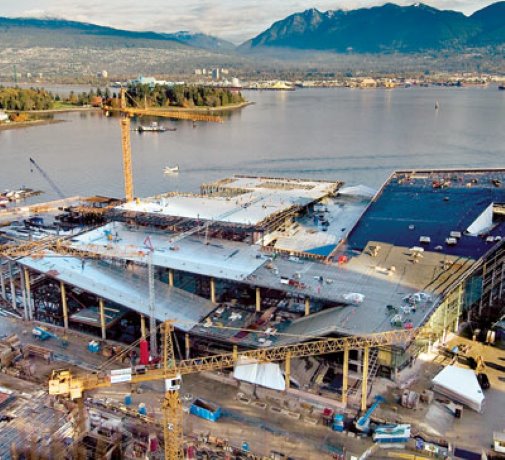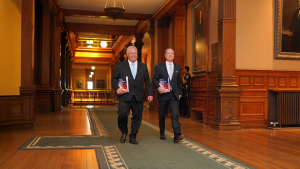The source of PCL Constructors Inc success on the Canadian landscape hasn’t changed from the day in 1906 Ernest Poole started business under his own name in Stoughton, Saskatchewan — E.E. Poole General Contractor.
People Power
The source of PCL Constructors Inc success on the Canadian landscape hasn’t changed from the day in 1906 Ernest Poole started business under his own name in Stoughton, Saskatchewan — E.E. Poole General Contractor.
To this day, the heart of the company remains in the heart of its 1,925 Canadian employees, who all have a personal stake in the success and failure of the Edmonton-based international builder.
“We think the employee ownership model is fundamental to company culture,” says Ric Forest, president of Western Canadian Buildings for PCL. “It motivates everyone to have a single focus, to have a team focus.”
It is also what helps the multinational firm live up to its moniker: PCL Construction Leaders.
The company’s relatively streamlined organizational structure — there are at most five levels between Forest and individual project managers — improves the flow of communication.
“It results in a fast transmission of information both ways,” Forest points out.
PCL focuses on safety, integrity, high performance and open communication.
An example of open communication can be found in the company’s Quest Program, which encourages employees to put forward ideas that worked on individual jobsites. The information, in a variety of areas, is published in PCL bulletins and on the company’s intranet, which allows employees to quickly and regularly learn from each other.
Another priority for the company is safety.
PCL has an impressive record and the company insists subcontractors follow PCL’s safety plan rather than just provincial standards.
“The safer the job, the better the productivity and the better the job,” Forest says. “We believe we’re the leader in safety.”
PCL, like many other construction companies in Canada, is facing a serious shortage of skilled labour. It has been actively recruiting employees from abroad and has found some success.
However, Forest insists that more needs to be done to meet the demand for workers in the construction industry.
“This is a problem that everyone has known about for three to five years,” Forest says, adding that infrastructure needs are growing exponentially at the same time.
The various provincial immigration nominee programs to bring skilled labour to certain areas in Canada are just too limited to effectively help with the crunch, says Forest. And there are too many restrictions on temporary foreign workers to solve the problem.
PCL believes investing in employee development and training is not only good for the company but also the people being relied on for success. It’s company policy that every year, everyone on the PCL payroll must complete 34 hours of training, Forest points out.
“They will be better able to help themselves and in turn, better able to help the company,” he explains.
PCL has grown from humble beginnings to become a leader in the industry by focusing on delivering the best value to the customer.
“It’s the single biggest thing we can do,” says Forest.
This can also lead to challenges as the company completes larger and more complex jobs within tighter timeframes. Overall the workforce is getting younger, but jobs are getting more complicated with little leeway for the complex nature of some projects.
More often nowadays builders are being confronted with the public-private partnership building and maintenance model of construction. While P3 deals are sustainable in the long term, Forest suggests there are many models for agreements that need to be unified before the P3 model can move forward and it doesn’t work for all projects.
Forest finds it interesting the public sector has latched on to a concept that been working in the private building market for a long time through lease-back arrangements.
Forest has been with PCL for about 10 years and in his spare time he enjoys motor racing, boating and hiking.
He said that the biggest satisfaction for him at work is seeing employees continue to reach and stretch to meet new challenges.

1/2
Ric Forest, president of Western Canadian Buildings for PCL.

2/2
Winnipeg’s Skateboard Plaza at the Forks is seen with the city’s skyline, including the Richardson Building and others built by PCL.











Recent Comments
comments for this post are closed